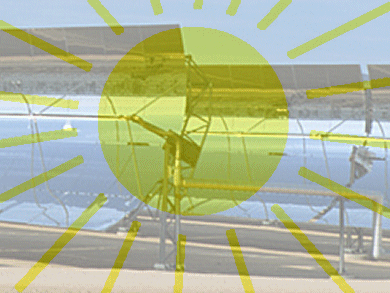The inability of traditional solar cells to extract the full energy of all of the different colours of light at once means that they are incapable of converting more than 34 % of the available sunlight into electrical power.
Neil C. Greenham, Cavendish Laboratory, University of Cambridge, UK, and colleagues developed a hybrid cell which absorbs red light and additionally harnesses the extra energy of blue light. The organic/inorganic hybrid photovoltaic device architecture uses singlet exciton fission to permit the collection of two electrons per absorbed high-energy photon while simultaneously harvesting low-energy photons. Typically, a solar cell generates a single electron for each photon captured.
In this solar cells, infrared photons are absorbed using lead sulfide nanocrystals. Visible photons are absorbed in pentacene to create singlet excitons, which undergo rapid exciton fission to produce pairs of triplets. These triplet excitons can be ionized at an organic/inorganic heterointerface.
Internal quantum efficiencies exceeding 50 % and power conversion efficiencies approaching 1 % are reported. These findings suggest an alternative route to circumvent the Shockley-Queisser limit on the power conversion efficiency of single-junction solar cells.
- Singlet Exciton Fission-Sensitized Infrared Quantum Dot Solar Cells,
Bruno Ehrler, Mark W. B. Wilson, Akshay Rao, Richard H. Friend, Neil C. Greenham,
Nano Lett. 2012, 12, 1053–1057.
DOI: 10.1021/nl204297u




